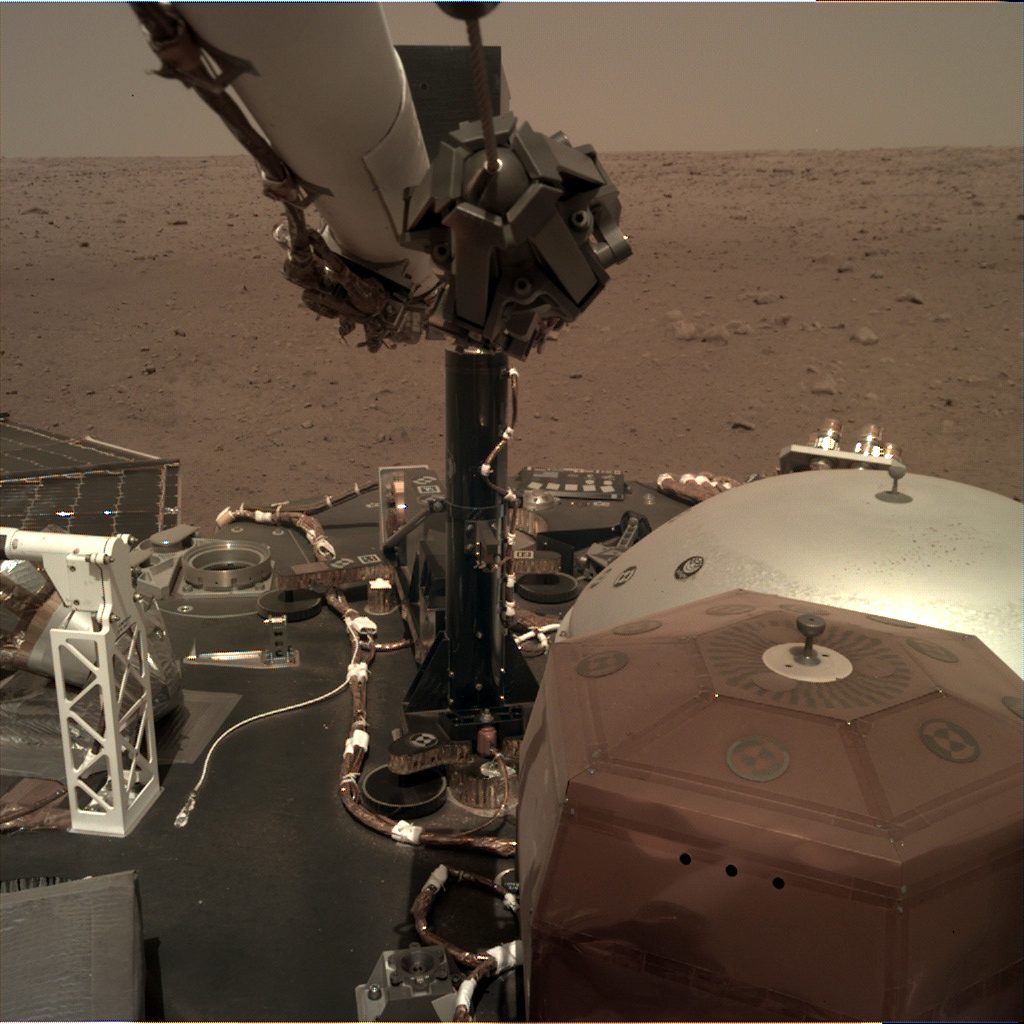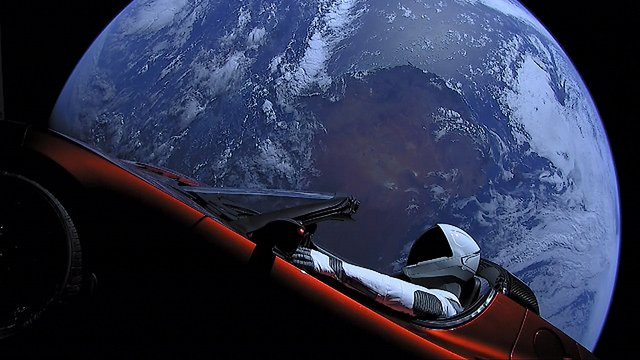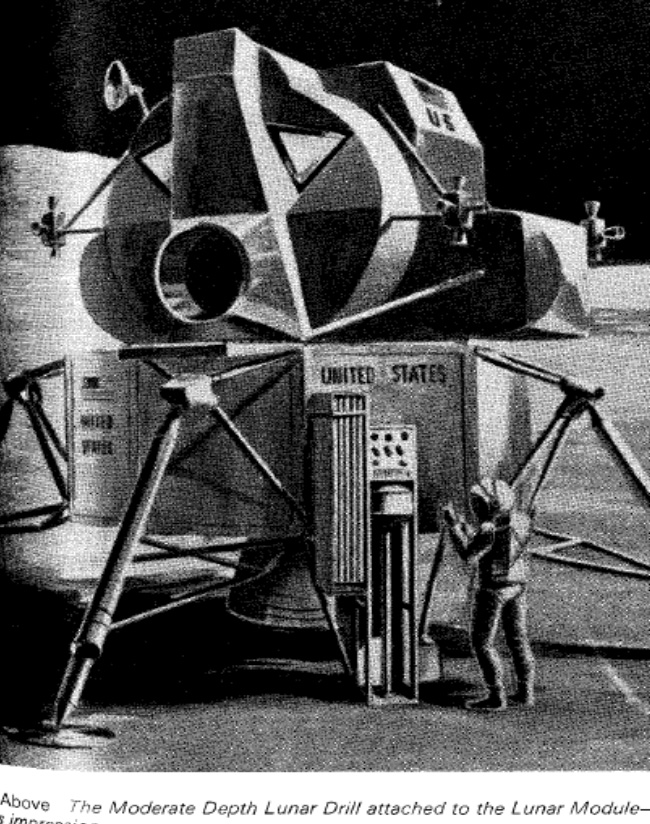EXPLORATION
12 décembre 2018
Forage au-delà de la Terre
Un peu plus d'une fois dans une lune bleue, vous avez lu un reportage sur la possibilité d'exploiter une surface sur le corps lunaire, de capturer l'eau d'un astéroïde à grande vitesse, ou même de peupler une planète lointaine. Star Wars, Star Trek et une multitude d'autres livres, films et séries télévisées nous divertissent depuis des décennies sur le potentiel au-delà des limites de notre existence basée sur la terre. Bien que nous n'ayons pas épuisé les ressources de notre propre planète (pensez à Interstellar), nous aimons regarder vers les étoiles et rêver.
Mais ce n’est plus uniquement de la science-fiction: Elon Musk et ses avancées SpaceX ont lancé une voiture Tesla Roadster dans l’espace en février 2018, ou le dernier module InSight de la NASA atterrissant parfaitement sur Mars fin novembre 2018. Il n'y a pas longtemps, en 1969, Neil Armstrong de la NASA est devenu le premier homme à marcher sur la lune. Imaginez avec l'accélération de la technologie et des capacités humaines où nous pourrions aller dans les prochaines décennies.
Alors, pourquoi s'intéresser aux mines en dehors de la Terre? Plusieurs raisons sont avancées pour expliquer pourquoi nous devrions extraire dans l'espace. Les ressources minérales sont vastes dans l’espace extra-atmosphérique et pourraient être utilisées pour construire de nouvelles colonies ou aider à alimenter et à propulser l’exploration spatiale même plus loin.
Alors, pourquoi s'intéresser aux mines en dehors de la Terre? Plusieurs raisons sont avancées pour expliquer pourquoi nous devrions extraire dans l'espace. Les ressources minérales sont vastes dans l’espace extra-atmosphérique et pourraient être utilisées pour construire de nouvelles colonies ou aider à alimenter et à propulser l’exploration spatiale même plus loin.
Dès le milieu des années 50, Boart Longyear était déjà impliqué dans le développement d'équipements pour la course à l'espace. Dans le cadre d'une équipe de projet spéciale en 1955 et 1956, les ingénieurs de Boart Longyear ont travaillé en tant que sous-traitants du principal contractant de la NASA, Westinghouse Electric, afin de concevoir une perceuse, un montage, un trépan à diamant, un carottier et des tiges de forage pour l'exploration lunaire. Le projet s'intitulait «Développement d'un système de forage souterrain pour la mission post Apollo». La responsabilité de Westinghouse Electric consistait à développer le système électrique permettant d'alimenter les opérations de forage. Westinghouse a été impliqué dans de nombreux projets de la NASA et a développé plus tard la caméra lunaire Apollo TV à balayage lent utilisée pour filmer le «saut géant pour l'humanité de Armstrong».
Le projet de carottage a nécessité de penser en dehors de notre atmosphère à un endroit où les outils pourraient fonctionner sous vide avec une gravité inférieure et des températures variables. L’équipe de Boart Longyear a été chargée de forer sans circulation de fluide, tout en maintenant les températures de fonctionnement du trépan, en supprimant les résidus de coupe et en récupérant les échantillons de carottes lunaires. Un «foret lunaire à profondeur moyenne» a été conçu pour pouvoir prélever des échantillons de carottes à des profondeurs de 100 pieds. Les essais des prototypes de foreuses lunaires spécialement conçus ont été réalisés dans la chambre à vide profonde de 40 mètres de Westinghouse et les premiers résultats ont été probants. Bien que le test ultime aurait consisté en une véritable exploration lunaire, la NASA a abandonné le projet car leur trajectoire a pris une autre direction et l'exercice a été mis en stockage.
En plus de la perceuse lunaire, Boart Longyear a effectué un travail considérable à la fin des années 1960 et au début des années 1970 pour mettre au point des ficelles et des forets dignes de l’espace. Plus de 80 forets au diamant spécialisés de 14 types ont été testés lors du forage de basalte sur une gamme de résistances à la compression et de duretés, ainsi que sur une large gamme de vitesses et de charges. Ce type de mèche était «en surface» avec une matrice de couronne imprégnée de diamants et liée à un corps en acier. Le succès de ces premiers prototypes a permis à Boart Longyear de faire ses preuves et d'innover dans le domaine de l'innovation.
Des décennies plus tard, JPL-Caltech a de nouveau reconnu ces réalisations de forage dans l'industrie de l'exploration spatiale en invitant Boart Longyear à apporter son expertise en matière de forage au programme Mars 2020 Rover dans le cadre du programme d'exploration Mars de la NASA. Pour ce projet, les ingénieurs ont travaillé sur un foret au diamant imprégné à la tarière sèche «monolithique». Le trépan était moulé en une seule pièce avec des diamants imprégnés dans la partie couronne et du tungstène et du métal dans la partie corps de la tarière. Ce bit a été testé avec succès sur divers types de roches, y compris le granit.

Crédit image: NASA / JPL-Caltech
L'atterrisseur Mars InSight actuel comprend des instruments permettant de forer jusqu'à environ 16 pieds sous la surface pour mesurer et aider les scientifiques à déterminer les températures de chaleur de Mars. Selon la NASA Site web de la mission Mars InSight, "C’est plus profond que les instruments précédents de n’importe quelle autre planète, lune ou astéroïde, qui n’a jamais creusé que par le haut des roches ou du sol."
Les ingénieurs de Boart Longyear continuent à être les pionniers des nouvelles technologies de l’industrie minière qui poussent l’exploration de plus en plus loin, avec plus d’efficacité et de meilleurs résultats. Est-ce que «l'espace: la dernière frontière»? Ce qui est appris sur Terre peut être adapté et pris en charge dans l'exploration spatiale et sous-marine.
Une technologie étonnante et un appétit de découverte se poursuivent et les voyages et l'exploration spatiaux franchissent cette barrière, nous amenant à la réalité que l'exploitation minière dans l'espace n'est pas seulement pour les galaxies très éloignées. Avant de le savoir, le forage à distance virtuel pourrait nous aider à découvrir ces précieux diamants dans le ciel.
PROFITEZ-VOUS DE CE CONTENU?
Inscrivez-vous à INSITE Digest pour vous tenir au courant des tous derniers articles publiés par Boart Longyear.
S'INSCRIRE
[pardot-form height="470" id="1805" title="Insite newsletter signup standalone"]
Permission de média: Si vous souhaitez republier cet article sur votre site web ou sur support papier, veuillez contacter marketing@boartlongyear.com pour permission. Nous sommes heureux que vous partagiez nos articles, et nous vous demandons seulement de citer Boart Longyear comme source et de fournir un lien, le cas échéant.





